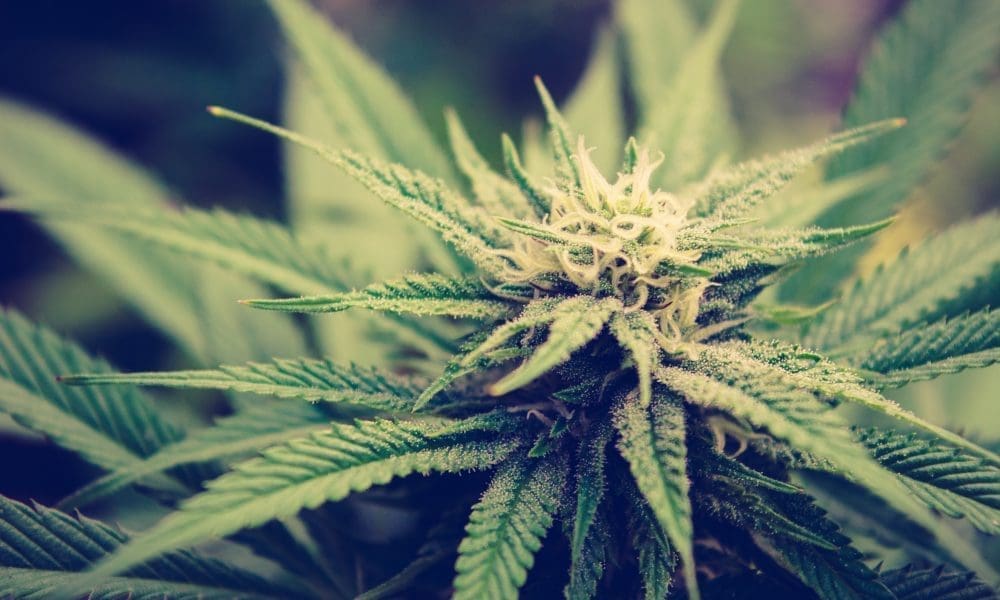featured
The Tale of the Hippie Trail (2022)
Published
2 days agoon

This past summer, as the US military exited Afghanistan, and the country has fallen back into a transitional phase. Afghanistan first became a nation just over 100 years ago in 1919, but one thing that has always transcended the country’s rocky political history is its legendary hash scene. Despite the Mujahideen, Taliban or communists, Afghanistan’s hash industry has transcended the people and policies that have made life for Afghan hash producers difficult over the past 50 years. The flood of hash that once hit Europe and America following the first major hash haul in 1967 has long since been forced out of practice, but the stories of this prime time of hauling hash across multiple country’s borders remain fascinating tales of a different time. High Times obtained an exclusive interview with Ray, who recounted his trips through Europe and Asia and the challenges he and his companions encountered on their journey.
The first hash haul is said to have occurred one year before things really hit the gas on the “Hippie Trail,” where thousands of westerners traveled east through Afghanistan on their way to find enlightenment in India. But for many, their trek would make a stop in Kabul, the capital city of Afghanistan. There they would start their quest to stock up on as much hash as possible before heading back west to wherever they called home; be it Germany, Amsterdam or southern California.
Much of what we know about the smuggling aspects of the trail come directly from one of the first groups to make it happen—The Brotherhood of Eternal Love, which included members from southern California. Brotherhood member Ron Bevan is considered to be the first to run an operation out of Kabul in 1967, although there were many groups doing it at the time.
Among these other groups, there was a young man named Ray. High Times sat down with Ray to talk about his past hash smuggling experiences, as we discussed the fallout from the US exit from Afghanistan, wondering what it could mean for a hash scene that has already been devastated for decades.
Hop In—We’re Going Smuggling
The days before Ray’s first trip to Afghanistan were filled with proper hippie business. “We went to southern Oregon in the late ’60s and for whatever reason out of pure synchronicity a bunch of us from northern California and southern California all ended up in this one house in southern Oregon,” Ray told High Times.
The group decided to take things to the next level and looked to start a commune. They spent some time hunting for a property, but after some hiccups with the search, they regrouped in California in 1968. A lot of the people that originally tossed that idea around remain friends to this day after originally finding each other all those years ago.
Part of that group included some friends who had already been smuggling hash from Afghanistan a year or two before that, and they had just brought back a load. In those days, Ray and his friends were staying in the High Sierras—the perfect place to unload some hash.
Most people associate the “Hippie Trail” with the image of a classic Volkswagen bus and a Hanomag Camper that rolled up to their spot in the same hills that was also very popular with other hash smugglers, such as Darrell. “He came, we unloaded it there, and it took a while. And after he got what he thought was the load amount he goes, ‘Okay, you guys can have the rest.’ And so we picked away at it because it was in the framework,” Ray said, “We had to use all kinds of tools we implement to dig it all out but I think eventually we got like another 10 pounds.”
This would be the first time Ray mentioned the man that he eventually partnered with to make the travel east. “So you know we are quite thrilled to make a connection with him. This is Long Beach, brother, I can give you his name because he’s no longer with us. Well, he had many names, but we knew him as Darrell,” Ray noted with a laugh.
Before connecting with Ray, Darrell had already made two or three trips. He was always a driver, and for good reason. In this critical role, he was the main person who drove from Holland to Kabul and back, through every border. He didn’t even need a map when he was on his runs.
Eventually Darrell shared his next plan with Ray: “Here’s what I want to do next time because I’m gonna have another Honomag, but also I’m going to buy a really nice motorhome,” Darrell told Ray at the time.
The motorhome was called a Revcon. It was the top-of-the-line in 1968 when it was designed. It had an aerodynamic aluminum body, and the 26 rails that ran the length of its frame were a hash smuggler’s dream.
“Very cool, very modern, front wheel drive. And he goes ‘I’m gonna buy this and we’re gonna, this is the vehicle we’re gonna make special rails that go inside the rails and we’ll have little hooks to pull it out,”’ Ray said of Darrell’s original plan.
Ray and Darrell had some friends that were engineers who helped them with building the rails. Eventually they would drive the Revcon across the country from California to New York, shipping it on to Rotterdam, Netherlands.
Darrell asked Ray to tag along for the full run to Afghanistan. “I go, ‘Sure, I’ll go slide and sit shotgun,”’ Ray replied. “It was like the coolest ride I ever took. But we were vegetarian at the time, so we were doing a lot of soups, avocados and carrot juice. We had it all decked out with the Norwalk Press, which is a real good juicing machine. We totally kept our eating habits intact.” Their eating habits would eventually earn them the nickname “The Carrot Juice Boys.”
The group prepped for their journey from Rotterdam after picking up the Revcon. They would make their way through Germany and Austria, then travel through Yugoslavia, Bulgaria, Turkey and Iran before finally reaching the Afghan Border.
That first trip would end up taking a few months, after Ray and Darrell got caught up in eastern Turkey. The Revcon’s front wheel drive engine featured torsion bars in the front, which didn’t pair well with the traffic or potholes they encountered on their journey. They lost control of the Revcon for a second, but were able to come to a stop in the center median. “Eastern Turkey is definitely the sticks, very isolated and very desolate,” Ray said of the breakdown.
When you break down out there, it’s common to surround your vehicle with rocks. They did so before hitchhiking to the closest town. They brought mechanics back to the Revcon, knowing they wouldn’t be able to replace the bar, but could rig something to get the Revcon back to civilization.
They hobbled into Tehran, Iran and messaged home for the part they needed. It wasn’t a fast process. “So we were in Tehran for about a good month, repairing the vehicle, but everything got straightened down,” Ray said, “So we rolled into Afghanistan, probably in late summer of 1970.”
Of Science and Borders
The mission was to obtain a couple hundred pounds of hash and five gallons of hash oil. While other groups had brought hash loads back for about three years before this trip, to the best of The Carrot Juice Boys’ knowledge, they were the first people ever to bring a flash evaporator to Afghanistan. Much of the Revcon was loaded with Everclear for their grand chemistry project.
If the idea of driving across the middle east with a chemistry set seemed weird, the opulence of the Revcon stole everyone’s attention at each border crossing, simplifying getting its contents across various borders in both directions. “I mean, they’ve seen the ‘Hippie Trail’ in the VW Vans, the Honomags, but they’ve never seen anything of this magnitude in this amazing really cool motorhome,” Ray noted on the border crossings. “And of course once we got into Persia we decked it out with Persian carpets and runners and it was looking really cool.”
They were very much playing the part of rich Californians, but they would still be pulled from the line at every border. “The head custom guy would come out and just wanted to go inside and look at it and say ‘oh very nice,”’ Ray said, “It’s just amazing.”
One time, a border agent pulled out their chemistry set and pulled out a beaker. He asked Darrell and the pair what it was. “Glass,” they replied. The border guard looked at it again, nodded in agreement with their take, and put it back in the box.
Iran had some of the toughest border restrictions, but once you entered the country, the group found that it was amongst the most welcoming as they attempted to Westernize before the Shah fell in 1979. Ray emphasized that it was one of the nicest places he’s ever been to, as they spent the month waiting for car parts. “They just want to make sure you’re [not] smuggling weapons or anything, doing nefarious stuff, but all the people there were so nice,” Ray noted of Tehran. “They just were so hospitable and helped us [with] whatever. If we’d go looking for the embassy, [residents] would take us in their car, take us to their home, feed us and then take us to the embassy.”
But with a repaired Revcon, things got a bit rougher as they approached the Afghanistan border. Every hotel featured signs that warned a prison sentence of 10 years in prison for a gram of hash, and life in prison for a kilo. “They try and put the fear in you, but we got some good hash in Turkey,” Ray said with a laugh.
After getting into Afghanistan, the group headed straight for Kabul. They stayed in a fancy neighborhood fitting of rich Californians. From there, they would head to The Solan Hotel, a hotspot for hash enthusiasts and general tourists heading in both directions on the trail.
One of Ray’s favorite things about The Solan Hotel was a space attached to the courtyard where you could park your van and camp near a little park attached to the hotel. There was always an ongoing rotation of Europeans and a few Americans, and it was always a good time.
The locals did their best to keep the hippies and smugglers happy, too. “Afghanis just loved us because we had money and we were very careful about religion,” Ray said. “We were very aware of how they are and how not to trespass or do anything [that] goes counter to them. There’s just some things so you don’t mess with. You don’t eat during the day during Ramadan and walk around chewing food.”
But Ray argued that besides that kind of thing, the religion of Islam was based in hospitality. Over the course of three trips that, in total, took about a year to complete, Ray picked up some language skills. One of the things he noticed immediately was how caring and personal everything was. He noted that a lot of the conversation focused on how the other person was feeling.
Back in their Kabul neighborhood, they rented out a two-story mansion and set up the hash lab. They would do a lot of the extraction work offsite and then bring the crude material back to the flash evaporator in the bathroom to get all the alcohol out. It would take them a couple of months to get the five gallons of hash oil they were shooting for.
“THEY JUST WERE SO HOSPITABLE AND HELPED US [WITH] WHATEVER. IF WE’D GO LOOKING FOR THE EMBASSY, [RESIDENTS] WOULD TAKE US IN THEIR CAR, TAKE US TO THEIR HOME, FEED US AND THEN TAKE US TO THE EMBASSY.”
Unloading the Goods
High Times asked Ray how much hash they needed to make the five gallons. Ray estimated that about 200 kilos were concentrated into the oil. He also noted the unpressed hash made for much better oil, then they hid the rest to stuff in the specialized frames of the Revcon. “The rest we had pressed up and put into the containers, the square tubes, it actually ended up making the hash look like a Hershey bar. We sold most of that in Amsterdam and I’m sure to this day, there are a lot of people there who call it ‘screw hole hash,’” Ray said.
The hash received this name when they put five to seven of the bars together and put a screw through the stack, just to tighten it up before they tossed it down the tube designed to fit into the Revcon’s internal storage system. “It was a precise measurement that we had all the patties pressed,” Ray noted on the precision used to fill each tube with as much product as possible.
As for the oil, that came out pretty great, too. The flash evaporator kept the oil at a reasonable temperature as it sweat off the Everclear used in production. “I mean, it was a black oil. But because of the flash evaporator we didn’t have to heat it in a high temperature, it was in a vacuum, so you got the real essence of really, really good hash,” Ray said. “I don’t know if you’ve had really, really good hash but it’s very floral and very sweet.”
Just like today, in order to make the best oil possible, they had to get their hands on the best material possible. Ray described the process that took them around the country from their upscale Kabul hash lab and base camp. The first connection they ever made was in Kandahar, Afghanistan.
“We used to go to Kandahar, but that was a tough place to be,” Ray noted on the trip. “Kandahar was like going back 1,000 years. I was like ‘Oh my God. That was an ancient town.’ And you couldn’t help but get dysentery just hanging out there for any amount of time. But Kabul was more modern.” In addition to the more modern vibe in Kabul, you could basically get whatever you needed. And in reality, it wasn’t that competitive with other smugglers in town because there was just so much hash to go around.
When it was time to return, the Revcon would leave Afghanistan without Ray. They hired a German woman to play the role of a fancy lady with a fancy motorhome. “We paid her like $10,000 or something. And she was great! She had like a fur coat. I mean, she’d look the part of being wealthy,” Ray said. She was the perfect accessory for a driver who had already completed this trip five times before. The key was the balance of looking like a regular person. Not being an asshole, but also not being too nice, in the hopes of getting waved through borders smoothly.
Ray and Darrell made it to Holland with no problems. The Revcon worked like a charm before being unloaded on a small farm outside Amsterdam. Most of the load would be sold locally.
“But here’s a luggage story for you,” Ray laughed. While the hash moved in Europe, they decided to bring a bunch of the oil back to America. At the time, Ray estimated that the oil was selling for about $10 a milliliter, so a whole liter was worth roughly $10,000 bucks. “We went to a liquor store in Amsterdam and bought Kahlua. Then we’d melt the little seal and stretch it and pull it over the bottle, undo the cap and pour out all the Kahlua and then poured in the hash oil. Then we heated the seal back up and you know back the cap and so it looked sealed, and we’d take two bottles,” Ray said. “So, we go to the airport and we’d go to the duty free and buy another bottle of Kahlua and we traded out the bottle we bought at duty-free. So, we just carried it right across check-in.”
Ray emphasized not to forget the exchange rate. That $10,000 bottle in 1970 would be worth over $70,000 today. He can’t recall how many bottles made it back, the whole five gallons would be worth $1.2 million today.
Adapting the Experience
On Ray’s two trips to Afghanistan, he already had the lay of the land. He flew into Kabul and would buy the hash ahead of time to limit the time spent in the country compared to the marathon road trip and hash oil production of his inaugural adventure.
Ray’s first trip lasted so long he actually overstayed his visa. When he returned for the second run the customs people at the airport noticed it on his passport and gave him a shorter amount of time. After learning his lesson, he got a new passport for the third run. It did the trick, and it was clear sailing at customs. “So, I’d go ahead of time and get there and order up and make sure everything’s ready,” Ray said, “So when the vehicle came through it wasn’t just there, it was like it was going across. It wasn’t there longer than a week or two, which is about the average tourist time somebody might spend there.”
The later runs wouldn’t feature the Revcon. The team moved on to four-wheel drive Suburbans with special compartments in the gas tank that could hold over 100 pounds of gas. The only problem with it was you had to stop a lot more to fuel up, but the trucks did a lot better on the roads than a motorhome.
“But it was pretty safe because to get to it you’d have to take out the whole gas tank and cut into it,” Ray said, “And that was the last time that we did it. We actually hired a professional race driver, who was a dear friend, and he did a good job.”
The gang had a mission of wider psychedelic enlightenment between trips. As they made the runs through the early 1970s, a lot of the resources went into furthering that mission. The freedom Ray and his peers were in search of came with the smuggling and they wanted to make sure to pay it forward. What would start as personal projects for the group would eventually end up in the hands of nonprofits down the line in the form of an unfinished boat. “So the majority of the money that we ever made went on that boat, eventually when the Russians started coming in and put in the puppet government and everything we said, ‘okay, that’s done. We’re not going back there again,”’ Ray said.
Expanding Lore of the First Smuggler
Three years prior to Ray’s first run, Ronnie Bevan of the Brotherhood of Eternal Love would make the first major smuggling run out of Afghanistan. He released the first autobiography of a hash smuggler entitled Brotherhood Hashish: The Story of Ronnie Bevan in 2018.
Many people speak of the “Hippie Trail” as intertwined tales of the many tourists that passed through and a handful of preeminent smugglers like him. High Times asked Bevan to weigh in on that idea. “One thing was there was more than just the two,” Bevan quickly rebutted. “You could get on a bus in London and end up in Kathmandu and there are photos of those people going in 1967 or 1968. The girls have bouffant hairdos and they’re in tight skirts. And then you see him a year later in Kathmandu, and we’re in the hippie clothes and their hair is all down.”
Bevan found that was really the basic motivation of the of the European travelers. Thousands of Europeans made that trip, but very few Americans did, because of the overseas aspect. “We didn’t have the buses. There just weren’t that many. I know, all of the guys that were in Afghanistan smuggling because I was there through several years, and there just weren’t that many,” Bevan said.
Bevan explained that a lot of people in London, or wherever they went from, by the time they got to Nepal all of a sudden they were into the metaphysical side of everything and taking psychedelics. But not everyone. Some people were there for the opposite of self-help. “There also was another large group of people that just did drugs,” Bevan explained, “You could buy heroin, cocaine, you could buy either from the pharmacy in Afghanistan. And consequently, we saw a lot of druggie type people just hanging out. So that’s just another dimension to what you’re talking about.”
Technically, many date the “Hippie Trail” to beginning in 1968, one year after Bevan’s first run. Bevan went on to explain how those increased crowds impacted business. “In the early days nobody got busted for anything, it wasn’t until 1971 that somebody busted [in] one of the vans,” Bevan said.
By 1973, Bevan and his friends had a warrant poster, and he was on the run. That same year Afghanistan’s King Zahir Shah made hash illegal following a $47 million dollar payment from the US government. “Our people had to move into Pakistan to do their work, and it was pretty much destroyed after that. And then it faltered and then a lot of people got busted and especially in those Volkswagens. I think about eight of them, and from that point on, none of them made it they got every one of them but when the Russians came [in] 1979 it was over for sure. That it’s, been over since then.”
A recent article in the South China Morning Post spoke with a cannabis farmer and hash producer outside of Kandahar named Ghulam Ali. Ali noted he hasn’t had any problems since the most recent transition of power, despite concerns that the Taliban would crack down a lot more than the coalition-backed government that fell last summer. “We don’t hear a lot over there. But I think the Taliban is pretty much leaving everything alone,” Bevan replied after reading Ali’s story. “I think what they’re doing is they’re trying to get in there economically.”
It’s also important to remember that hash and Afghanistan have a much longer history than the Taliban does with the nation. “And I think the Taliban probably see that and realize that the people are going to be much happier and much easier to deal with if they let them have their culture,” Bevan argued.
This article appears in the January 2022 issue of High Times. Subscribe here.

Author: mscannabiz.com
MScannaBIZ for all you Mississippi Cannabis News and Information.
You may like
-


Weed & Psychedelics Are Doing for Eating Disorders What Big Pharma Couldn’t, Survey Says
-


Congressional Committee Pushes To ‘Eliminate’ Illegal Marijuana Grows And Tackle Money Laundering By Chinese-Linked Cannabis Operations
-


Supreme Court Will Discuss Ban On Marijuana Users’ Gun Ownership In September
-


Watch: £1m cannabis factory found in town’s old Woolworths store | News
-


Texas cannabis legalization bill filed in hemp-focused special session (Newsletter: July 25, 2025)
-


Mississippi AG takes aim at hemp products, including Delta THC | State
featured
Weed & Psychedelics Are Doing for Eating Disorders What Big Pharma Couldn’t, Survey Says
Published
25 minutes agoon
July 25, 2025
An international survey published in JAMA Network Open revealed that cannabis and psychedelics such as psilocybin and LSD were perceived as more effective in relieving symptoms of eating disorders than traditional prescription medications.
The study was conducted by a research team from the University of Sydney, led by PhD candidate Sarah-Catherine Rodan from the Lambert Initiative for Cannabinoid Therapeutics, and is considered the most comprehensive to date in this field.
7,600 Voices: A Look Into Lived Experiences
The research analyzed responses from 7,600 individuals with eating disorders, 94% of whom were women, across 83 countries. Participants reported on their use of prescription and non-prescription substances to manage symptoms.
Among respondents:
- 40% had anorexia nervosa.
- 19% had bulimia nervosa.
- 11% had a binge-eating disorder
- 9% had ARFID (avoidant/restrictive food intake disorder)
- 65% reported depression, and 55% reported generalized anxiety
Other commonly reported comorbid conditions included:
- ADHD: 33%
- Substance use disorder: 15%
- Alcoholism: 9%
Top-Rated: Cannabis, Shrooms & LSD Take the Crown
The survey explored which substances people with eating disorders use with or without medical supervision and how they perceive their effects on symptoms and overall mental health.
The findings were clear: cannabis, psilocybin (the active compound in magic mushrooms), and LSD were rated highest for reducing eating disorder symptoms, especially in cases of anorexia and ARFID.
- Cannabis: Highly rated for stimulating appetite and enhancing the pleasurable experience of eating—central issues in restrictive disorders. Prior research shows it activates the medial hypothalamus, a brain region associated with hunger and food enjoyment. However, in individuals with bulimia, the effect was not as positive: it may even worsen behaviors like bingeing or compulsive eating.
- Psilocybin: This hallucinogenic mushroom compound was reported to help with emotional regulation and reduce eating disorder symptoms. Although use was infrequent (1–2 times per year), many respondents noted long-lasting effects, including improvements in anxiety, mood, and body image.
- LSD: Also used occasionally, LSD was perceived as beneficial for overall mental well-being. Some participants linked it to reduced distress around eating, improved self-perception, and better stress management.
Prescription Meds? Helpful… But Not for Everything
Traditional prescription medications, such as antidepressants, received lower scores for their impact on eating disorder-specific symptoms but were still seen as helpful for overall mental health.
As for stimulants, responses were mixed: those with binge-eating disorder rated them positively, while those with restrictive disorders rated them negatively.
The Worst Offenders: Alcohol, Nicotine & Cocaine
Among recreational or non-prescribed substances, alcohol, nicotine, tobacco, and cocaine received the lowest evaluations. Participants reported that these worsened symptoms and negatively affected mental health.
What’s Next: From Survey to Clinical Trials
The study’s findings have led to new clinical research initiatives at the University of Sydney’s Lambert Initiative and Inside Out Institute:
- A clinical trial using psilocybin to treat anorexia nervosa
- A pilot study on CBD (cannabidiol, the non-intoxicating compound in cannabis) for youth with severe anorexia
Eating disorders such as anorexia, bulimia, and binge-eating disorder are complex conditions requiring a comprehensive approach. The fact that so many individuals turn to substances like cannabis or psychedelics and find them effective raises important questions for medicine, mental health care, and public policy.
According to lead researcher Sarah-Catherine Rodan, “Our findings highlight promising pathways for future treatment research.”
Indeed, this isn’t the first time these substances have been studied for eating disorders. For example, MDMA was part of a Phase 3 clinical trial in 2022, showing potential in addressing these conditions. Psilocybin also has a modest but growing body of research supporting its role in treating eating disorders; in 2024, it demonstrated positive mental health effects in patients with anorexia.
And while this sample doesn’t represent the entire global population and the study is based on self-reported data, the findings open the door to future clinical trials, especially given the lack of effective therapeutic options currently available for these conditions.

Author: mscannabiz.com
MScannaBIZ for all you Mississippi Cannabis News and Information.
featured
Congressional Committee Pushes To ‘Eliminate’ Illegal Marijuana Grows And Tackle Money Laundering By Chinese-Linked Cannabis Operations
Published
1 hour agoon
July 25, 2025
A key congressional committee is calling for a stepped-up effort to eradicate illegal marijuana grows that are “not sanctioned” by state or tribal law, while also tackling money laundering issues associated with illicit Chinese-connected cannabis businesses.
The House Appropriations Committee included sections in reports attached to spending bills that are aimed at increasing federal resources targeting bad actors around the marijuana space.
As in past sessions, the report language for the Interior, Environment, and Related Agencies appropriations legislation says the committee is “aware that trespassers illegally grow marijuana on public lands in California.”
“These unlawful activities harmfully impact the public, water, soil, and wildlife,” it says, adding that members support Forest Services “efforts to develop tools to detect and eradicate grow sites, including a potential remote-sensing survey of Federal public lands to identify grow sites and allow for the development of cost estimates for reclamation.”
Accordingly, Forest Services and the Bureau of Land Management are directed to work with state, local and tribal governments “on survey, reclamation, and prevention efforts to the maximum extent possible, including to prevent the displacement of criminal activities to illegal grow sites on non-Federal lands.”
Further, the covered agencies would be required to work with the Justice Department and U.S. Department of Homeland Security (DHS) to “eliminate grow operations that are not sanctioned by State or Tribal authorities and provide a report to the Committee on its efforts and the estimated cost for reclamation not later than 180 days following the enactment of this Act.”
Here’s the full text of the section:
“Marijuana on Public Lands.—The Committee is aware that trespassers illegally grow marijuana on public lands in California. These unlawful activities harmfully impact the public, water, soil, and wildlife. The Committee supports Forest Service efforts to develop tools to detect and eradicate grow sites, including a potential remote-sensing survey of Federal public lands to identify grow sites and allow for the development of cost estimates for reclamation. The Committee directs the Forest Service and the Bureau of Land Management to continue to cooperate with State, local, and Tribal governments on survey, reclamation, and prevention efforts to the maximum extent possible, including to prevent the displacement of criminal activities to illegal grow sites on non-Federal lands. Additionally, the Committee directs each agency to convene and develop a strategy with the Departments of Justice and Homeland Security to eliminate grow operations that are not sanctioned by State or Tribal authorities and provide a report to the Committee on its efforts and the estimated cost for reclamation not later than 180 days following the enactment of this Act. Additionally, the Committee encourages the Forest Service’s Law Enforcement and Investigations to increase the use of novel models for the detection of illegal marijuana cultivation sites on Forest System land.”
The interior and environment funding bill and report was approved by the panel on Tuesday.
Another report—which is being attached to appropriations legislation covering Commerce, Justice, Science, and Related Agencies (CJS)—focuses on combating money laundering by cannabis businesses associated with the Chinese Community Party (CCP).
It says agencies must “utilize funds directed to anti-money laundering programs to investigate potential money laundering schemes involving CCP-connected marijuana businesses and entities providing financial services to these businesses.”
Here’s the text:
“CCP Money Laundering.—The Committee directs the Department to utilize funds directed to anti-money laundering programs to investigate potential money laundering schemes involving CCP-connected marijuana businesses and entities providing financial services to these businesses. The Department is further directed to provide a report on its activities within 120 days of enactment.”
The underlying CJS bill has proved more controversial, with provisions to block the Justice Department from rescheduling marijuana. The legislation would also maintain a separate longstanding rider protecting state medical cannabis programs from federal interference—though with new language authorizing enhanced penalties for sales near schools and parks.
The CJS legislation also keeps intact another longstanding rider preventing DOJ interference in state hemp research programs.
The committee was expected to take up the draft CJS bill and report on Thursday but that was postponed as lawmakers left the capital for August recess.
Last week, the Senate Appropriations Committee advanced its own version of the CJS measure, which would also maintain protections for states with medical marijuana programs. However, it omits the separate proposal included in the House version preventing DOJ from rescheduling cannabis.
—
Marijuana Moment is tracking hundreds of cannabis, psychedelics and drug policy bills in state legislatures and Congress this year. Patreon supporters pledging at least $25/month get access to our interactive maps, charts and hearing calendar so they don’t miss any developments.![]()
Learn more about our marijuana bill tracker and become a supporter on Patreon to get access.
—
Meanwhile, the Senate committee also recently included a variety of marijuana and psychedelics-related provisions in a report attached to a pair of spending bills—including calls to allow U.S. Department of Veterans Affairs (VA) doctors to recommend medical cannabis if the federal government reschedules it, exploring the possibility of “reducing opioid use through medical marijuana” and cracking down on illicit grow operations.
The panel also approved the veterans funding bill along with an amendment allowing VA doctors to recommend medical cannabis to their military veteran patients in legal states.
A House appropriations subcommittee separately approved a spending bill that would maintain a controversial provision preventing Washington, D.C. from using its own tax dollars to create a regulated marijuana market.

Author: mscannabiz.com
MScannaBIZ for all you Mississippi Cannabis News and Information.
featured
Supreme Court Will Discuss Ban On Marijuana Users’ Gun Ownership In September
Published
2 hours agoon
July 25, 2025
Amid a smattering of recent court cases across the country casting doubt on the constitutionality of the federal government’s blanket ban on firearm possession by marijuana users—a law known as Section 922(g)(3)—the U.S. Supreme Court is set to privately discuss in September whether to take up a pending case that centers on the statute.
According to the high court’s docket for the case, U.S. v. Cooper, the matter has been distributed to justices for consideration in a private conference on September 29. An appeals court panel previously dismissed a three-year prison sentence against the defendant, who was convicted for possession of a firearm while being an active user of marijuana.
The development comes as at least two separate but similar cases wait in the wings. One, U.S. v. Baxter, involves a defendant found in possession of both a firearm and a bag of marijuana. The government charged him under 922(g)(3), which prohibits gun ownership by “unlawful” users of controlled substances.
The U.S. Department of Justice (DOJ) has repeatedly asked the court for more time to decide whether to seek review of an opinion in that case from the U.S. Circuit Court of Appeals for the Eighth Circuit, which ruled the gun ban might be unconstitutional as applied to the defendant.
Most recently, justices extended the government’s deadline to July 3 to file an appeal in that case—a deadline that’s come and gone without any new documents being posted to the docket.
Asked by Marijuana Moment about the status of the solicitor general’s reply in Baxter, a DOJ public affairs representative replied on Thursday: “No comment, thanks.”
Separately, the federal government is asking the Supreme Court to review a different case involving the firearm ban, U.S. v. Hemani, arguing that “Section 922(g)(3) complies with the Second Amendment.”
“That provision targets a category of persons who pose a clear danger of misusing firearms: habitual users of unlawful drugs,” says a filing from U.S. Solicitor General D. John Sauer.
In Cooper, which justices are set to discuss amongst themselves in September, Sauer earlier this month asked that the court hold off on deciding whether to review that case until the Hemani dispute is resolved.
One reason DOJ could be focused on the high court taking up Hemani in particular is that the defendant in that case is not only a cannabis user but also a user of cocaine who’s sold drugs in the past, according to court findings, which could make him less sympathetic in the eyes of the court. Defendants in the other cases were merely found in possession of both a firearm and marijuana.
Lawyers for the defendant in Hemani argued in a brief earlier this week that the high court should decline the case.
“With no circuit split and the limited scope of the summary affirmance below, this case is not an appropriate procedural vehicle for seeking this Court’s review,” they wrote. “The petition for writ of certiorari should be denied.”
If the Supreme Court takes up Hemani and declares 922(g)(3) constitutional, such a ruling could could mean government wins in the remaining cases.
A number of federal courts in recent months have cast doubt on the legality of 922(g)(3), finding generally that while the ban on gun ownership among drug users may not be entirely unconstitutional, there’s scant historical precedent for such a broad restriction of Second Amendment rights on an entire a category of people.
As a recent report from the Congressional Research Service explained the current legal landscape, a growing number of federal courts are now “finding constitutional problems in the application of at least some parts” of the firearms prohibition.
In a ruling earlier this week, for instance, a three-judge panel for the U.S. Court of Appeals for the Eighth Circuit vacated a defendant’s conviction and remanded the case back to a district court, noting that a retrial before a jury may be necessary to determine whether cannabis in fact caused the defendant to be dangerous or pose a credible threat to others.
The new Eighth Circuit opinion appears to differ from a recent Third Circuit ruling in that the new decision says that not every application of 922(g)(3) “require[s] an individualized factual determination,” explaining that such determinations wouldn’t be necessary if the government could demonstrate that a particular drug made an entire class of users dangerous.
By contrast, the Third Circuit earlier this month said in a published opinion that district courts must make “individualized judgments” to determine whether 922(g)(3) is constitutional as applied to particular defendants.
The appeals panel ruled that while a person “need not have harmed someone, threatened harm, or otherwise acted dangerously to justify his disarmament,” the history of gun laws in the country requires that “district courts must make individualized judgments and conclude that disarming a drug user is needed to address a risk that he would pose a physical danger to others.”
Judges in that case noted that historical restrictions on gun ownership under “drunkenness and lunacy laws” in the U.S. “were still always based on an ‘individualized assessment’ rather than a categorical judgment.”
In 2024, the Supreme Court issued a ruling in U.S. v. Rahimi, a case having to do with firearm possession among people subject to domestic violence restraining orders. Justices subsequently remanded a number of pending cases back to lower courts for reconsideration, including U.S. v. Daniels, which centered on the federal gun prohibition for cannabis consumers.
When the Daniels case was first heard by the U.S. Court of Appeals for the Fifth Circuit, judges declared the gun restriction unconstitutional. After the Supreme Court remanded the case back to the Fifth Circuit, the appeals court in a January opinion again took issue with the statute, explaining that while 922(g)(3) wasn’t unconstitutional on its face, it was unconstitutional as applied to a defendant who was only an occasional cannabis user.
The Fifth Circuit’s Daniels ruling came on the heels of a string of other judicial decisions casting doubt on the legality of the ban.
Earlier this year, a federal judge in Rhode Island ruled that the ban was unconstitutional as applied to two defendants, writing that the government failed to establish that the “sweeping” prohibition against gun ownership by marijuana users was grounded in historical precedent.
A federal judge in El Paso separately ruled late last year that the government’s ongoing ban on gun ownership by habitual marijuana users is unconstitutional in the case of a defendant who earlier pleaded guilty to the criminal charge. The court allowed the man to withdraw the plea and ordered that the indictment against him be dismissed.
Another panel of judges, on the U.S. Court of Appeals for the Tenth Circuit, heard oral arguments in November in the government’s appeal of a district court ruling that deemed the gun ban unconstitutional.
In a number of the ongoing cases, DOJ has argued that the prohibition on gun ownership by marijuana users is also supported by the Rahimi decision that upheld the government’s ability to limit the Second Amendment rights of people with domestic violence restraining orders.
DOJ has made such arguments, for example, in favor of the firearms ban in a case in a case in the U.S. Court of Appeals for the Eleventh Circuit. In that matter, a group of Florida medical cannabis patients contends that their Second Amendment rights are being violated because they cannot lawfully buy firearms so long as they are using cannabis as medicine, despite acting in compliance with state law.
DOJ under President Joe Biden consistently argued that medical marijuana patients who possess firearms “endanger public safety,” “pose a greater risk of suicide” and are more likely to commit crimes “to fund their drug habit.”
It remains unclear how the Trump administration will approach the cases. At a NRA conference in 2023, Trump suggested there might be a link between the use of “genetically engineered” marijuana and mass shootings. He listed a number of controversial and unproven factors that he said at the time he would direct the Food and Drug Administration (FDA) to investigate as possibly causing the ongoing scourge of mass shooting afflicting the country.
“We have to look at whether common psychiatric drugs, as well as genetically engineered cannabis and other narcotics, are causing psychotic breaks” that lead to gun violence, he said.
DOJ has claimed in multiple federal cases over the past several years that the statute banning cannabis consumers from owning or possessing guns is constitutional because it’s consistent with the nation’s history of disarming “dangerous” individuals.
In 2023, for example, the Justice Department told the U.S. Court of Appeals for the Third Circuit that historical precedent “comfortably” supports the restriction. Cannabis consumers with guns pose a unique danger to society, the Biden administration claimed, in part because they’re “unlikely” to store their weapon properly.
Last year, Biden’s son Hunter was convicted by a federal jury of violating statute by buying and possessing a gun while an active user of crack cocaine. Two Republican congressmen challenged the basis of that conviction, with one pointing out that there are “millions of marijuana users” who own guns but should not be prosecuted.
The situation has caused confusion among medical marijuana patients, state lawmakers and advocacy groups, among others. The National Rifle Association’s (NRA) lobbying arm said recently that the court rulings on the cannabis and guns issue have “led to a confusing regulatory landscape” that have impacted Americans’ Second Amendment rights.
“Marijuana use is no longer limited to the domain of indigenous religious customs or youth-oriented counterculture and now includes a wide variety of people who use it for medicinal or recreational reasons,” said the advocacy group, which does not have an official stance on cannabis policy generally. “Many of these individuals are otherwise law-abiding and productive members of their communities and want to exercise their right to keep and bear arms.”
Meanwhile, some states have passed their own laws either further restricting or attempting to preserve gun rights as they relate to marijuana. Recently a Pennsylvania lawmaker introduced a bill meant to remove state barriers to medical marijuana patients carrying firearms.
Colorado activists also attempted to qualify an initiative for November’s ballot that would have protected the Second Amendment rights of marijuana consumers in that state, but the campaign’s signature-gathering drive ultimately fell short.
As 2024 drew to a close, the ATF issued a warning to Kentucky residents that, if they choose to participate in the state’s medical marijuana program that’s set to launch imminently, they will be prohibited from buying or possessing firearms under federal law.
The official said that while people who already own firearms aren’t “expected to” turn them over if they become state-legal cannabis patients, those who “wish to follow federal law and not be in violation of it” must “make the decision to divest themselves of those firearms.”
Since then, bipartisan state lawmakers have introduced legislation that would urge Kentucky’s representatives in Congress to amend federal law to clarify that users of medical marijuana may legally possess firearms, though no action has since been taken on that bill.
Kentucky Gov. Andy Beshear (D) said in January that he supported the legislature’s effort to urge the state’s congressional delegation to call for federal reforms to protect the Second Amendment rights of medical marijuana patients, but the governor added that he’d like to see even more sweeping change on the federal level.
“I think the right way to deal with that is not just to focus on that issue, but to change the schedule of marijuana,” Beshear said at a press conference. “What we need to change is the overall marijuana policy by the federal government.”
Photo elements courtesy of rawpixel and Philip Steffan.

Author: mscannabiz.com
MScannaBIZ for all you Mississippi Cannabis News and Information.

Weed & Psychedelics Are Doing for Eating Disorders What Big Pharma Couldn’t, Survey Says

Congressional Committee Pushes To ‘Eliminate’ Illegal Marijuana Grows And Tackle Money Laundering By Chinese-Linked Cannabis Operations

Supreme Court Will Discuss Ban On Marijuana Users’ Gun Ownership In September

Watch: £1m cannabis factory found in town’s old Woolworths store | News

Texas cannabis legalization bill filed in hemp-focused special session (Newsletter: July 25, 2025)

Mississippi AG takes aim at hemp products, including Delta THC | State

Judge overseeing cannabis rescheduling retires, leaving it to Trump’s DEA head (Newsletter: July 24, 2025)

Marijuana Use Has A Positive Impact On Consumers’ Careers, Poll Says

Single Dose Of Psilocybin Provided ‘Rapid Onset’ Relief Of OCD Symptoms, Study Finds

State lawmakers consider ban on THC products in Texas – NBC 5 Dallas-Fort Worth

Most Florida GOP Voters Oppose Marijuana Legalization Ballot Initiative, Poll Finds As Campaign Gathers Signatures

Vacant Erie County property to become industrial marijuana farm

Cypress Hill Honored for 30 Years of Cannabis Advocacy at California State Fair

Marijuana establishments pass $8B in gross sales in Massachusetts

Massachusetts Lawmakers Consider Competing Bills Around Boundaries Of Marijuana Advertising

Moncton cannabis facility criticizes excise tax

Marijuana and the WWE – The Fresh Toast

Crackdown on illegal cannabis shops in Buffalo

Turkish Parliament Legalizes Low-THC Product Sales in Pharmacies

The DEA’s New Boss Holds the Keys to Weed Reform: Will He Take Action?

Former Erie Co. Home To Cannabis Growth Site?

New German Medical Cannabis Restrictions Will Harm Patients And Hinder Industry Growth (Op-Ed)

New Survey: 9 in 10 Americans Want Decontaminated Cannabis
Dream Of Working In Weed? This Scholarship Could Make It Happen

Alert: Department of Cannabis Control updates data dashboards with full data for 2023

Connecticut Appoints The US’s First Cannabis Ombudsperson – Yes there is a pun in there and I’m Sure Erin Kirk Is Going To Hear It More Than Once!

5 best CBD creams of 2024 by Leafly

EU initiative begins bid to open access to psychedelic therapies

Free delta-9 gummies from Bay Smokes
New Study Analyzes the Effects of THCV, CBD on Weight Loss

5 best autoflower seed banks of 2024 by Leafly

May 2024 Leafly HighLight: Pink Runtz strain

Mississippi city official pleads guilty to selling fake CBD products

Curaleaf Start Process Of Getting Their Claws Into The UK’s National Health System – With Former MP (Resigned Today 30/5/24) As The Front Man

Discover New York’s dankest cannabis brands [September 2024]

Horn Lake denies cannabis dispensary request to allow sale of drug paraphernalia and Sunday sales | News

Local medical cannabis dispensary reacts to MSDH pulling Rapid Analytics License – WLBT

Press Release: CANNRA Calls for Farm Bill to Clarify Existing State Authority to Regulate Hemp Products

Nevada CCB to Accept Applications for Cannabis Establishments in White Pine County – “Only one cultivation and one production license will be awarded in White Pine County”

5 best THC drinks of 2024 by Leafly

The Daily Hit: October 2, 2024

6 best CBD gummies of 2024 by Leafly

5 best delta-9 THC gummies of 2024 by Leafly

Weekly Update: Monday, May 13, 2024 including, New Guide for Renewals & May Board meeting application deadline

People In This State Googled ‘Medical Marijuana’ The Most, Study Shows

PRESS RELEASE : Justice Department Submits Proposed Regulation to Reschedule Marijuana

Thailand: Pro-cannabis advocates rally ahead of the government’s plan to recriminalize the plant

Press Release: May 9, STIIIZY and Healing Urban Barrios hosted an Expungement Clinic & Second Chance Resource Fair
Trending
-

 California Cannabis Updates1 year ago
California Cannabis Updates1 year agoAlert: Department of Cannabis Control updates data dashboards with full data for 2023
-

 Breaking News1 year ago
Breaking News1 year agoConnecticut Appoints The US’s First Cannabis Ombudsperson – Yes there is a pun in there and I’m Sure Erin Kirk Is Going To Hear It More Than Once!
-

 best list12 months ago
best list12 months ago5 best CBD creams of 2024 by Leafly
-

 Business10 months ago
Business10 months agoEU initiative begins bid to open access to psychedelic therapies
-

 Bay Smokes1 year ago
Bay Smokes1 year agoFree delta-9 gummies from Bay Smokes
-

 cbd1 year ago
cbd1 year agoNew Study Analyzes the Effects of THCV, CBD on Weight Loss
-

 autoflower seeds10 months ago
autoflower seeds10 months ago5 best autoflower seed banks of 2024 by Leafly
-

 Mississippi Cannabis News1 year ago
Mississippi Cannabis News1 year agoMississippi city official pleads guilty to selling fake CBD products

